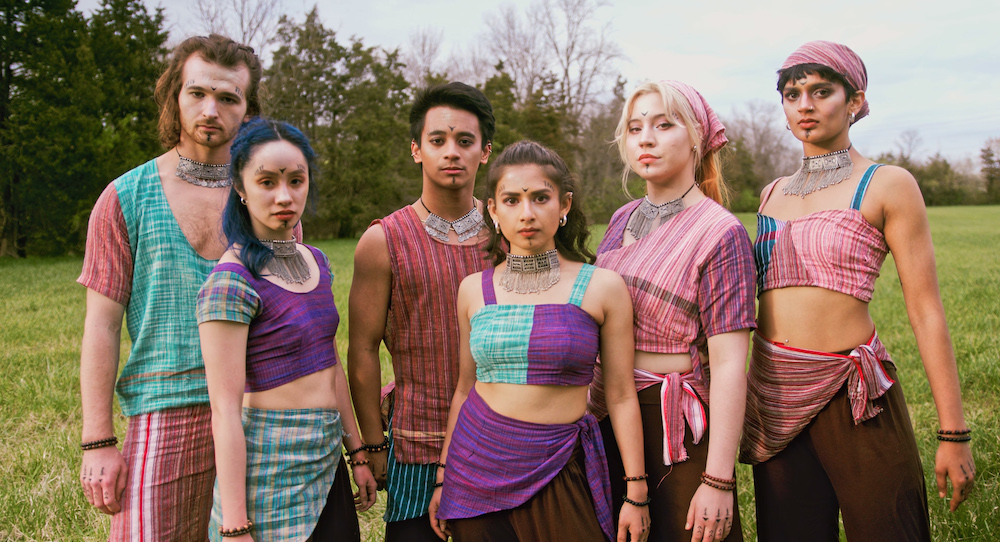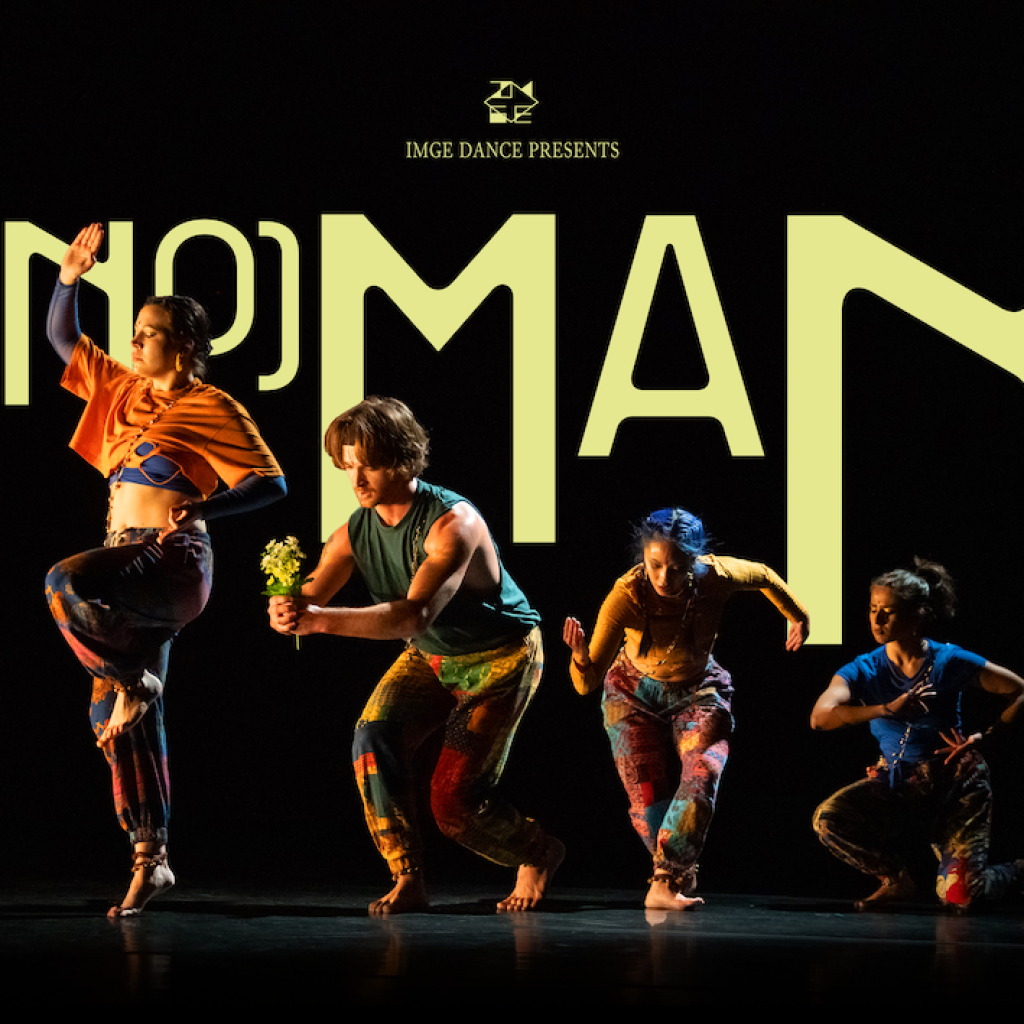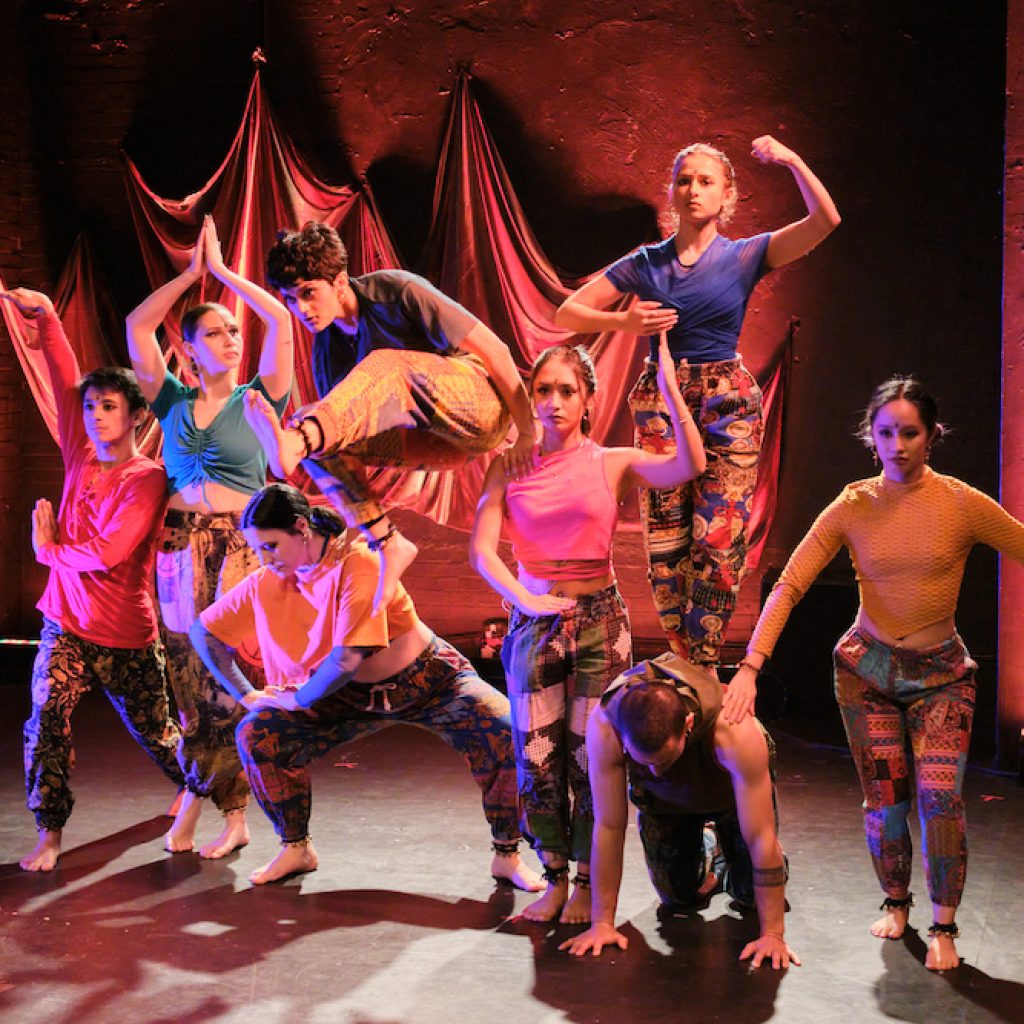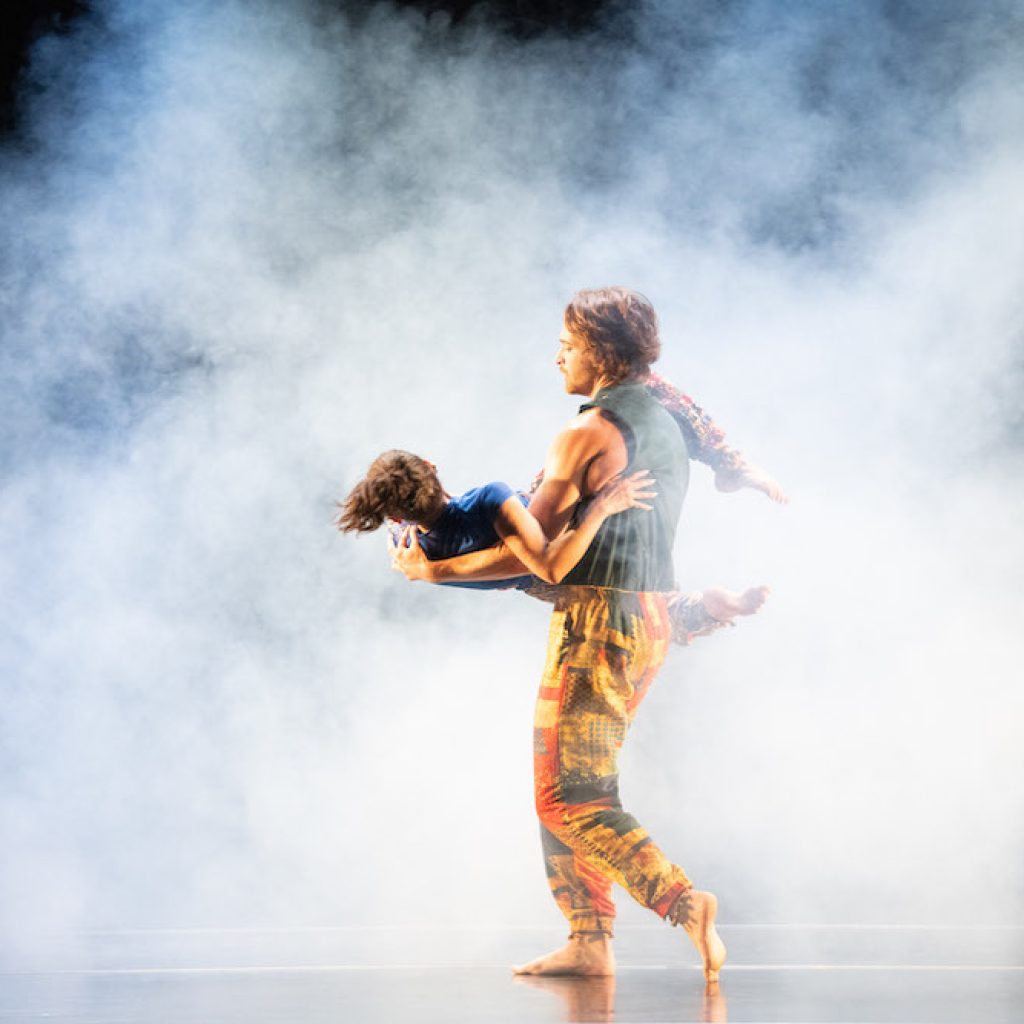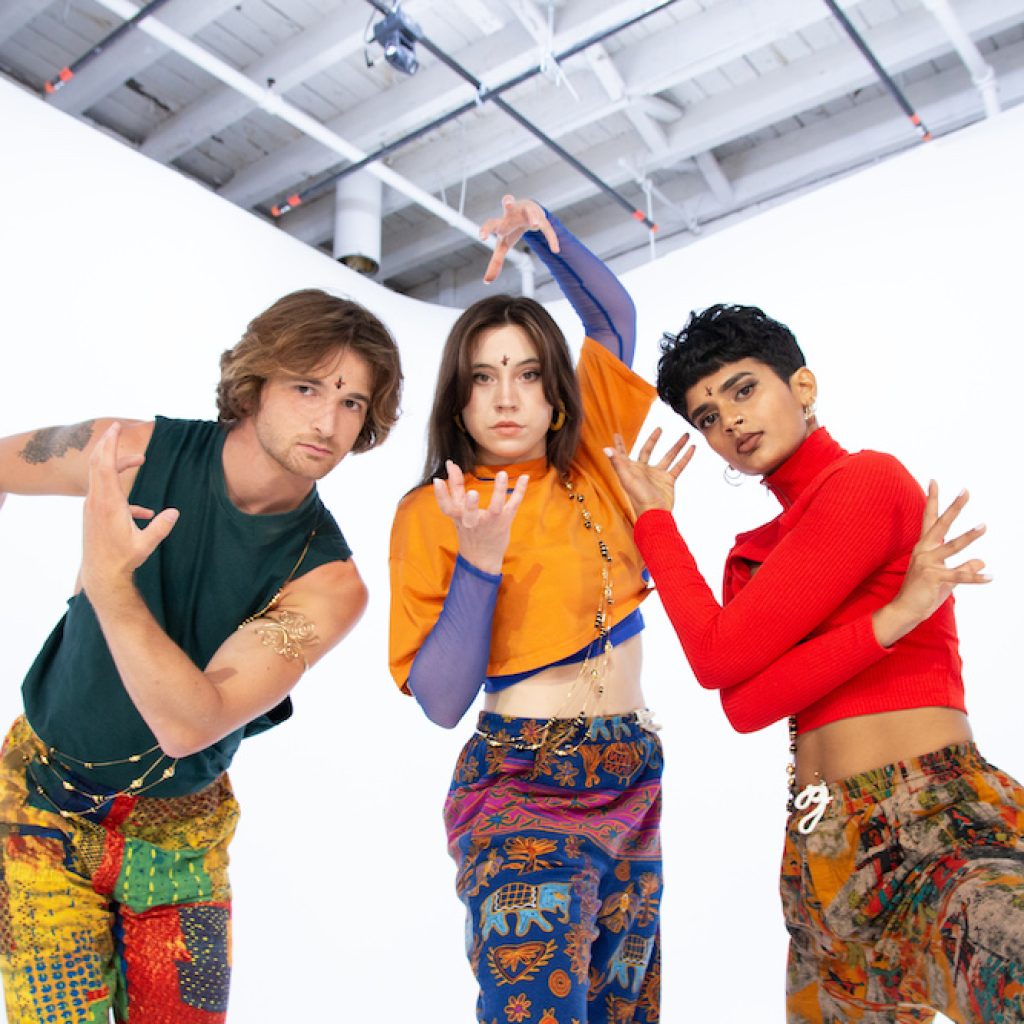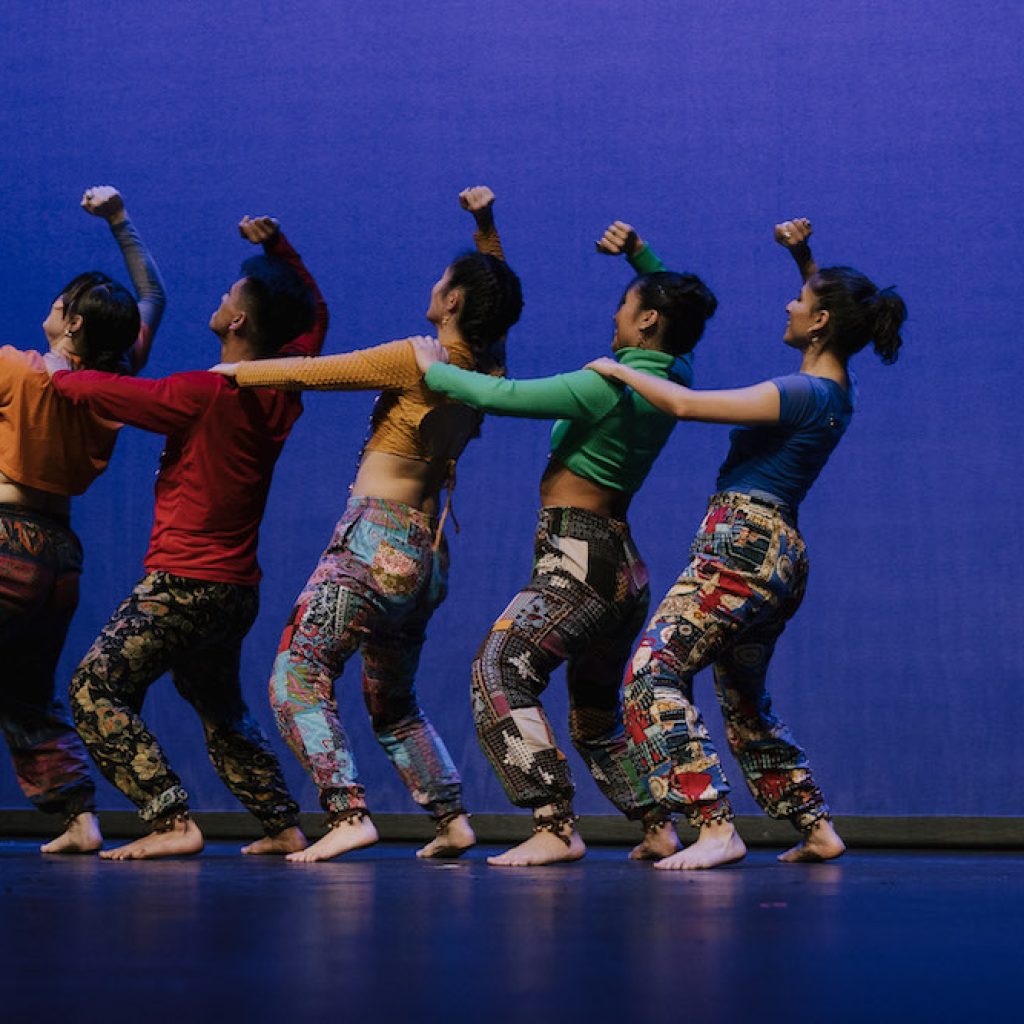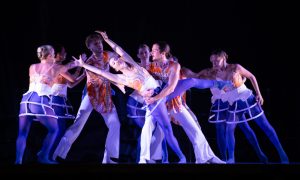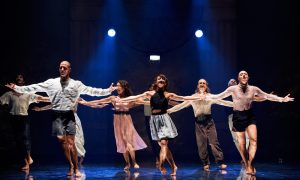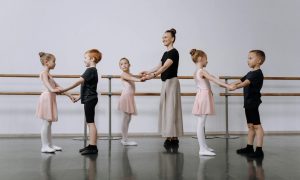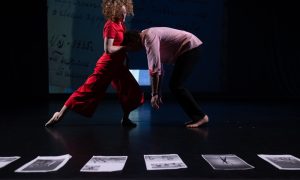Speaking with dancemaker Ishita Mili feels like an encounter with a kaleidoscope of qualities: joy and the sadness of past experience, erudition and warm accessibility, realism and the visionary shine of big dreams. She’s bringing that multiplicity to bear in (no)man, a new evening-length work from her company IMGE Dance (“image”; New Jersey and NYC-based).
It’s the first major work from the company that’s probed big, universal questions she’s had for decades, grounded in a culturally dynamic movement language – one that’s also long-standing. Dance Informa speaks with Mili about the new work, the larger mission and ethos guiding the company, where it’s all going from here, and more.
IMGE Dance is a ‘genre-blurring dance company that unravels traditional forms…to reinvent how movement connects our experiences.’ How will (no)man reflect this mission and work? How might it advance that work; is there anything notably new and bold that you’re bringing to the table here?
“no(man) is a product of my life thesis: an amalgamation of my life experiences, the boxes that I’ve been sorting through my whole life, from Bengali, American, minority, upper caste, classical Indian dancer, female, the list goes on. It references the values from these cultures, and how I saw clashes between them that never made sense to me. When I was growing up, I was one of the only people I knew that were asking questions about those things.
And then, as a teenager entering Black American street styles, I had a bit of an identity crisis. I had been framed as a marginalized identity, but I recognized hierarchies and power dynamics within that framing. I never felt home in any community, really – not in the dance community, either. Through IMGE, I made a space where I could surface all of these clashes and find a way to exist as myself. Turns out that’s called being a ‘rebel.’
The dancers I’ve worked with bring a wide range of movement and ancestral histories that add more perspectives to these questions. We share experiences of cultural isolation, and illustrate how movement can be connective tissue between cultures. no(man) is our first evening-length production that really examines all of that.
I look at choreography like a jigsaw puzzle; pieces appear that seem to not have a place, but eventually it all comes together. For this work, it’s coalesced into that thesis on questions that have been asked repeatedly for centuries — from life/death, to power/loss, to inclusion/exclusion.
These questions have no answer, but we keep asking them. What we can do is accept universal truths, as well as find ways to ground ourselves and connect with each other in a world where everyone is taught to fend for themselves and climb to the top.”
(no)man investigates ‘who is included – and who is excluded – across space and time.’ What else might you like audience members, and our readers, to know about the work? What do you think the work uniquely contributes — to the contemporary dance landscape and beyond it?
“The work investigates some seemingly big and abstract concepts, but is also extremely accessible. We all live in continuous cycles of pain and beauty in ways even the many kids who have seen this show easily understand. The cultural patchwork we create in the work – through music, movement and more – builds that sense of universality. Audience members will find experiences they relate to and others that they might not – but nothing is completely foreign.
Using dance to find ways that we’re different yet the same is our way of sparking empathy. You don’t have to be a ‘dance aficionado’ to enter the work. We really reject and don’t relate to that kind of requirement. If you’ve ever thought about these universal questions, you’re welcome. You can find something you relate to in what we do.
As for the novelty of what we do, I think that it’s in the dance vocabulary. It’s a novel approach to a transcultural yet grounded movementscape. The vocabulary desconstructs bharatanatyam, hip hop, Mayurbhanj chhau, house, vogue, contemporary, and so much more across Indian to American styles.
We unravel those movement systems to find the threads that are relevant to what we’re doing – without necessarily rejecting the other threads. All of the dancers bring their kinetic histories to that process, which creates the ever-evolving movement kaleidoscope that is the IMGE methodology. It seems like a complicated map to navigate, but it feels quite clear.”
Creating culturally pluralistic choreography is indeed not exactly easy. It takes intention and care to shape it into something cohesive, as well as culturally-informed and sensitive. Are there any other notable and intentional ways through which you all approach that process?
“Anything that’s classical has a hierarchical structure. We thread together separate vocabularies by questioning how those hierarchies can intersect with street and folk forms, as well as finding consistent qualities that connect to our values. That includes things like groove, alignment, gestureology through the body, et cetera. It’s a methodology that’s emerged over the eight years that we’ve been working in this way.
I believe that you don’t need to be a professional dancer to access these ways of moving. In fact, we’re expanding the ways in which we share our methodology with all sorts of community members, with all sorts of movement histories and life experiences.”
IMGE works across a variety of different performance contexts — concert, commercial, and musical theater. How do you see the multiplicity there – for example, how you approach each context differently, if at all?
“It’s all really happened by accident, just because the right person saw something of ours at the right time. That points back to universality; there’s something in our work that resonates in all contexts. For example, we’ve had commercial work come to us because of social media – specifically our short films and content on YouTube and Instagram.
Digital work brought us to audiences around the world and new opportunities that otherwise would have had no way of finding us. That’s helped us gain a more comprehensive understanding of the infinite possibilities of creating. The commitment to artistic practice has really been the key to it all; we’ve just kept doing the work, and opportunities have emerged.”
Where to from here?
“IMGE: it is me and I am it. And it’s beyond! Because of our growing practice and ethos, the possibilities are constantly multiplying. This past year we’ve expanded our performance work into a larger methodology. That opened doors of education in academia and wider communities across the country.
We’ve also stepped into our producer hat and founded several platforms for artists and audiences. We started New Jersey’s first international dance festival, in partnership with mignolo arts center, after realizing that the fourth most diverse state in the country never had one. We’ve also spearheaded the Kinetic Dance Film Festival, a dance film festival that intentionally sources from underground dance communities that don’t intersect with the entertainment industry.
We also started a South Asian Performing Arts Summit, to connect resources, start conversations and solve problems between South Asian emerging to veteran arts workers. We’re currently building out a mentorship platform and career coaching services under the IMGE methodology.
I believe that IMGE is more than a dance company – we’re a cultural changemaker. We really believe in the power of creation as a combination of creativity meeting opportunity. The only way I’ve gotten anywhere is because I met the right people at the right time who took a chance on me.
I host monthly intensives under the IMGE methodology in NYC, and will be travelling across the country during the year, for all folks curious about embodying a global movement practice. We also have new short film work arriving to our already illustrious YouTube, for wherever you may be tuning in from. We really believe in making creativity accessible to you, in infinite ways. So find us on Instagram, in the studio, or on a stage near you (or bring us there)!”
IMGE Dance will present (no)man from February 14-15, at CUNY Tribeca and through the CUNY Dance Initiative (CDI). Learn more and purchase tickets here. Find IMGE Dance at @imgedance, and Mili at @ishitamili, on Instagram.
By Kathryn Boland of Dance Informa.


